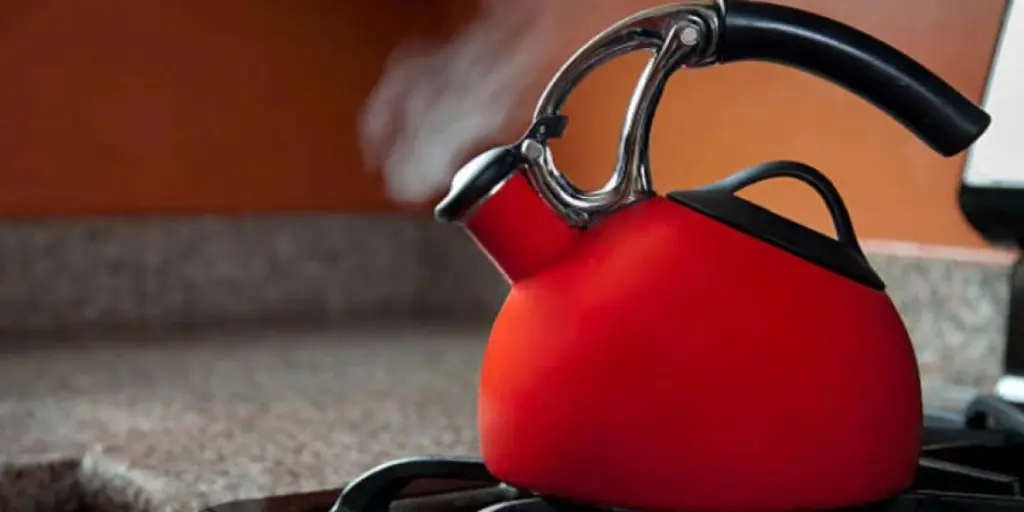In the realm of tea kettles, 2024 marks a year of significant innovation and expanded functionality. These kettles, a staple in both domestic and professional settings, have evolved beyond their traditional roles. Today, they offer enhanced features like precise temperature controls, energy efficiency, and designs that cater to a wide range of aesthetic preferences. As these appliances become increasingly integral to modern lifestyles, their impact extends to enhancing daily rituals, from a morning cup of tea to an afternoon break in busy work environments. This evolution reflects a broader trend towards appliances that are not only practical but also contribute to the quality of everyday life, blending utility with a touch of elegance.
Table of Contents
1. Tea kettle types and their uses
2. 2024 tea kettle market overview
3. Criteria for selecting top tea kettles
4. Leading tea kettle models of 2024
5. Conclusion
Tea kettle types and their uses
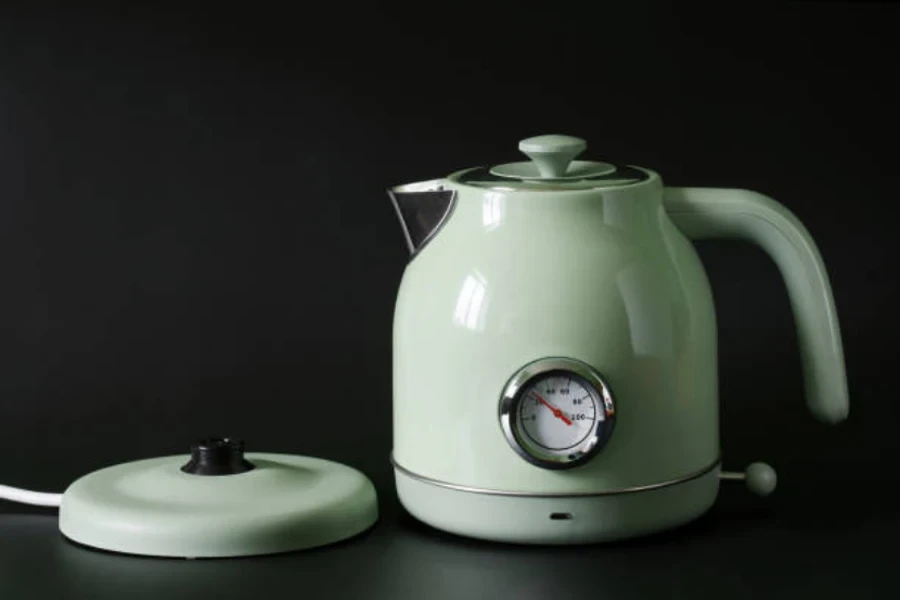
The tea kettle market presents a variety of options, each designed to meet specific needs. From the traditional stovetop models to modern electric variants, the choice depends on factors like convenience, efficiency, and the setting in which they are used.
Electric vs. stovetop: a comparative analysis
Electric kettles have gained popularity due to their convenience and speed. They boil water faster than stovetop models, making them a time-efficient choice for busy settings. Most electric kettles also feature automatic shut-off and temperature settings, which add a layer of safety and precision – a significant advantage in settings where attention might be divided.
Stovetop kettles, on the other hand, are valued for their classic aesthetic and durability. They are often made from sturdy materials like stainless steel or copper and can last for many years. However, they require a heat source and typically take longer to boil water compared to electric models. Stovetop kettles are ideal for environments where the kettle’s visual appeal is as important as its functionality.
Specialty kettles: for the tea connoisseur
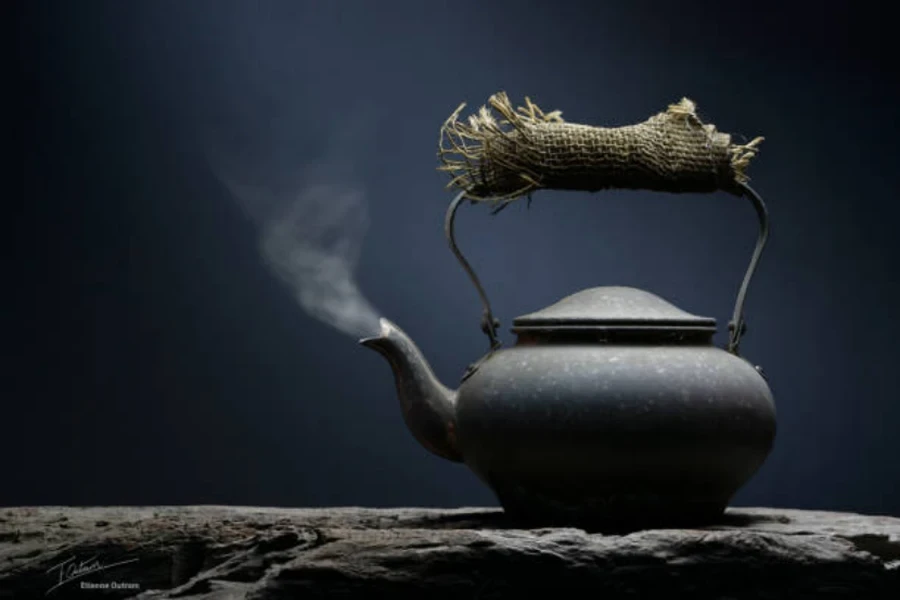
For those who take their tea seriously, specialty kettles cater to a more niche market. These kettles often feature unique designs and functionalities tailored to specific types of tea. For example, gooseneck kettles, with their precise pouring spouts, are perfect for making pour-over coffee or steeping delicate loose-leaf teas. Variable temperature kettles are another popular choice, allowing users to select the perfect brewing temperature for different tea varieties, from green to black tea.
Specialty kettles are not just about functionality; they often boast stylish designs that make them a statement piece in any kitchen or office setting. They reflect an appreciation for the art of tea and coffee making, combining aesthetic appeal with specialized features for the ultimate brewing experience.
In conclusion, the tea kettle market in 2024 offers a broad spectrum of choices. From efficient electric models suitable for fast-paced environments to elegant stovetop and specialty kettles that cater to the connoisseurs, there is a kettle for every preference and need. When selecting a tea kettle, it’s crucial to consider the setting, frequency of use, and the specific requirements of the users to ensure the perfect match.
2024 tea kettle market overview

The tea kettle market in 2024 presents a landscape marked by emerging trends and shifting consumer behaviors. As technology advances and lifestyles evolve, the demand for tea kettles that blend functionality with design aesthetics is on the rise.
Key market data and trends
The tea kettle market, especially focusing on electric kettles, has shown considerable growth and development. As of 2022, the market was valued at USD 4.29 billion and is projected to reach USD 6.08 billion by 2030, growing at a CAGR of 4.2% during the forecast period of 2023 to 2030. This growth is driven by changes in consumer lifestyles globally, the rising popularity of kettles with advanced features like a 360-degree swivel base and easy pour spout, and a shift towards energy-efficient appliances.
Electric kettles are favored for their energy efficiency compared to stovetop methods, offering quick boiling for various uses, making them an attractive choice for consumers aiming to reduce energy consumption. The hospitality industry’s reliance on electric kettles for providing guests with hot water also contributes to steady market demand.
Key players in the market include Aroma Housewares Company, Hamilton Beach Brands, Inc., Groupe SEB India, Cuisinart, and Breville USA, Inc. The market is segmented based on raw materials, types, applications, and distribution channels, with a significant presence in regions like Asia-Pacific, North America, Europe, and the Middle East and Africa.
Consumer preferences and shifts
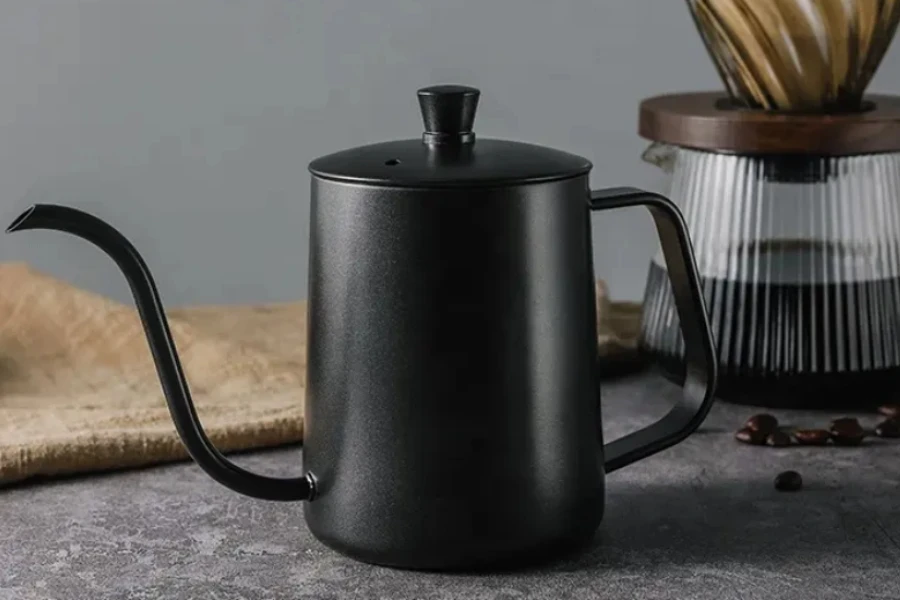
Consumer preferences in the tea kettle market are increasingly influenced by lifestyle trends. There is a noticeable shift towards minimalistic and sleek designs, catering to modern kitchen aesthetics. The market is seeing a rise in the popularity of compact and portable kettles, meeting the needs of consumers with limited kitchen space or those who travel frequently.
Another significant shift is the growing demand for smart kettles, equipped with features like remote operation and integration with home automation systems. These kettles offer the convenience of preparing hot beverages with minimal effort, aligning with the fast-paced lifestyles of today’s consumers.
Additionally, the health-conscious consumer segment is showing interest in kettles with preset temperatures for different types of teas, ensuring optimal brewing conditions and preserving the health benefits of various tea leaves. This trend highlights the increasing importance consumers place on the quality and health aspects of their beverages.
In conclusion, the tea kettle market in 2024 is evolving to meet the diverse and sophisticated needs of modern consumers, with a focus on convenience, design, and health-conscious features. As preferences continue to shift, manufacturers are responding with innovative products that not only brew tea but also enhance the overall experience of tea consumption.
Criteria for selecting top tea kettles
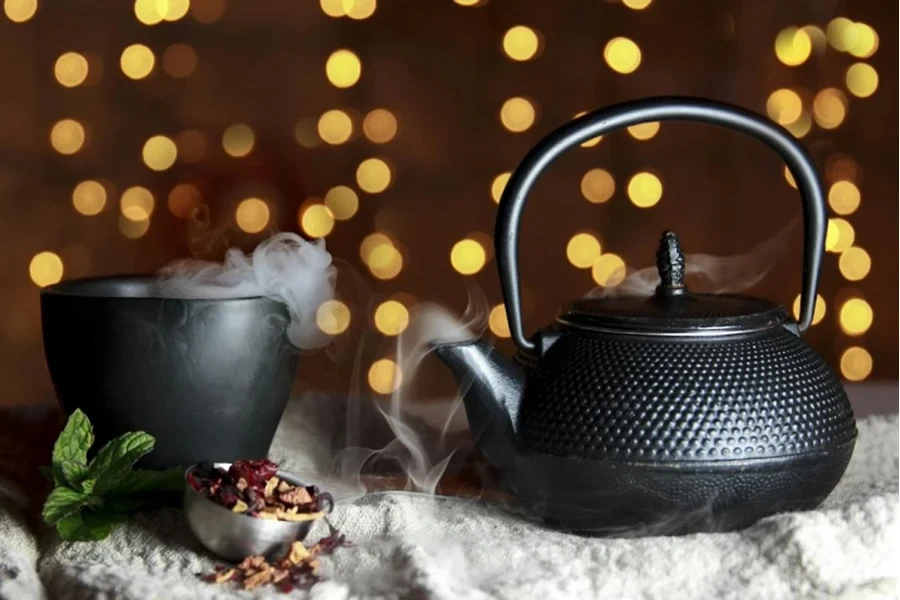
Selecting the ideal tea kettle involves a careful consideration of several key factors. These criteria ensure that the chosen product not only meets the practical needs but also aligns with aesthetic preferences and durability standards.
Evaluating quality and durability
The quality of a tea kettle is largely determined by its material, construction, and longevity. A kettle’s durability directly influences its lifespan and performance.
Material Quality: The market offers a variety of materials, including stainless steel, glass, and cast iron. Stainless steel kettles, known for their rust resistance and robustness, are a popular choice for their balance of durability and cost-effectiveness. Glass kettles provide a chemical-free brewing experience and are favored for their aesthetic appeal, though they require careful handling. Cast iron kettles, while heavier, excel in heat retention and durability, often becoming heirlooms passed down through generations.
Build and Construction: A kettle’s build quality is crucial. Features like a seamless build, sturdy handles, and leak-proof lids contribute to its overall durability. For instance, kettles with a single piece of metal for the body and spout reduce the risk of leaks. The construction of the heating element in electric kettles also plays a significant role. Models with concealed heating elements are generally more durable and easier to clean.

Longevity Factors: Longevity is influenced by factors such as the thickness of the material and the quality of the finish. For example, a thicker gauge in stainless steel kettles can prevent dents and deformities over time. The finishing touches, like non-reactive interior coatings and scratch-resistant exteriors, also contribute to a kettle’s longevity.
Real-world Examples: A high-quality kettle might feature a stainless steel body with a multi-layer bottom for even heat distribution, a stay-cool handle, and a whistle that ensures safety while signaling boiling water. Brands often provide warranty periods, reflecting their confidence in the product’s durability. For instance, a kettle offering a 5-year warranty indicates a strong belief in its long-term performance.
In conclusion, evaluating a tea kettle’s material quality, build, and longevity factors is essential. These elements determine not just the kettle’s lifespan, but also the quality of the brewing experience. For business professionals and those selecting products for commercial purposes, these criteria ensure that the chosen kettles meet both functional and aesthetic needs over time.
Considering design and capacity
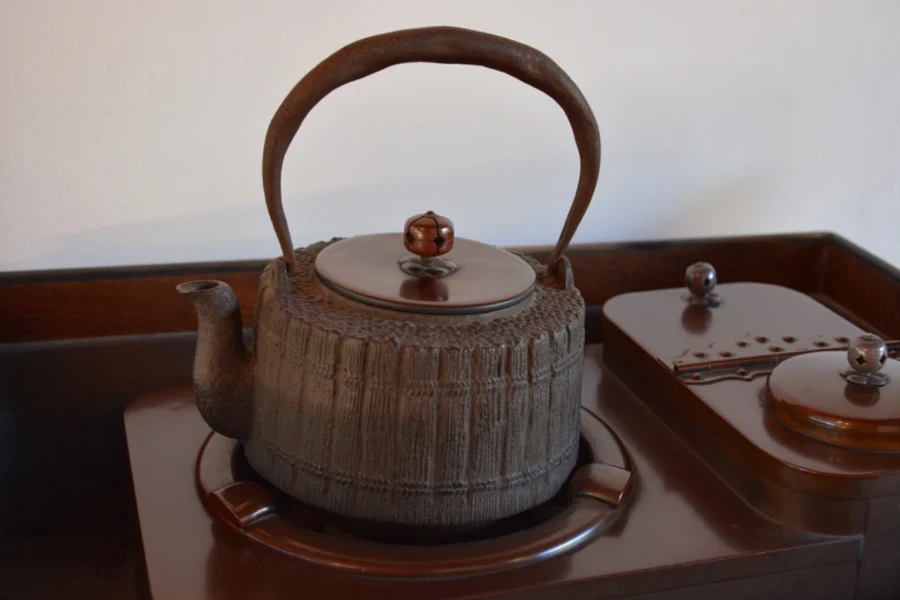
In the selection of tea kettles, design aesthetics and capacity are crucial factors that cater to diverse consumer needs. These elements not only reflect personal style but also determine the kettle’s practicality in various settings.
Design Aesthetics: The design of a tea kettle extends beyond mere looks; it embodies the user’s lifestyle and preferences. Modern kettles offer a range of styles, from classic to contemporary, fitting seamlessly into various kitchen decors. For instance, a sleek, stainless steel kettle with a matte finish might appeal to those with a minimalist kitchen, while a brightly colored enamel kettle could be a focal point in a more traditional setting. The design also encompasses ergonomic features, such as the shape of the handle, the ease of pouring, and the whistle’s sound quality. These aspects enhance user experience and safety.
Capacity Needs: The capacity of a tea kettle should align with the user’s requirements. For individual use or small households, a compact kettle of about 1-liter capacity suffices, ensuring water isn’t wasted. In contrast, larger households or office settings might benefit from a kettle with a 1.7-liter capacity or more, allowing multiple cups to be brewed at once. The choice of capacity can impact energy efficiency and convenience. For example, a larger kettle might take longer to boil but provides more hot water in a single cycle, whereas a smaller kettle is quicker but needs refilling more often.
Real-world Examples: A family kitchen might opt for a 2-quart capacity kettle, offering enough hot water for several tea drinkers at once, while a single-person household might prefer a 1-liter electric kettle for quick and efficient brewing. In office environments, a kettle with variable temperature settings caters to diverse tea and coffee preferences, enhancing its utility.
In summary, considering design aesthetics and capacity is vital in selecting the right tea kettle. These factors not only ensure the kettle fits into the user’s lifestyle and décor but also cater to their specific usage needs. For professionals selecting products, understanding these aspects helps in choosing kettles that appeal to a broader consumer base, balancing style with functionality.
Leading tea kettle models of 2024
The tea kettle market in 2024 showcases an impressive array of models, blending innovative technology with refined aesthetics. This section highlights the standout features of the leading kettles.
Breakthrough innovations in electric kettles

The electric kettle market in 2024 has seen significant advancements, with several models standing out for their innovative features:
Breville BKE820XL Variable-Temperature Kettle: This model is a game-changer in precision heating. It offers a range of temperature settings, each tailored to different types of teas and coffees, from delicate white teas to robust French press coffees. The BKE820XL combines a sleek stainless steel design with practical functionality, featuring a digital temperature display and a 20-minute keep-warm function. Its 1.8-liter capacity makes it versatile for both personal and family use.
Cuisinart CPK-17 PerfecTemp: The CPK-17 stands out for its intuitive user interface, with six preset heat settings for steeping various teas at just the right temperature. The kettle’s brushed stainless steel finish and ergonomic handle make it both stylish and comfortable to use. Additionally, its 1.7-liter capacity and 1500-watt heating element provide quick and efficient boiling, while the blue backlit water window adds a modern touch.
Fellow Stagg EKG Electric Pour-Over Kettle: Renowned for its minimalist design and precise temperature control, the Stagg EKG is a favorite among pour-over coffee enthusiasts. It features a precision pour spout and a built-in brew stopwatch, ensuring a perfect pour-over every time. The kettle’s aesthetic appeal is matched by its functionality, with a 1-liter capacity and variable temperature control ranging from 135°F to 212°F.

KitchenAid KEK1222PT 1.25-Liter Electric Kettle: This compact and efficient kettle is known for its rapid boil time and vibrant color options, fitting perfectly in modern kitchen spaces. Its 1.25-liter capacity is ideal for smaller households or office environments. The kettle features a smooth aluminum handle, a removable lid for easy filling, and an LED on/off switch, combining simplicity with practicality.
Smeg 50’s Retro Style Aesthetic Electric Kettle: Smeg’s kettle brings a touch of vintage style to the modern kitchen. It offers a 1.7-liter capacity and a 1500-watt heating element for quick boiling. The kettle’s stainless steel body and chrome base are complemented by its retro design elements, making it a statement piece that doesn’t compromise on performance.
Each of these electric kettles reflects the 2024 market’s emphasis on combining style with functionality, catering to diverse consumer needs and preferences. From precise temperature controls to stylish designs, these models are at the forefront of kettle innovation, setting the standard for quality and performance in the kitchen.
Stovetop kettles: traditional meets modern
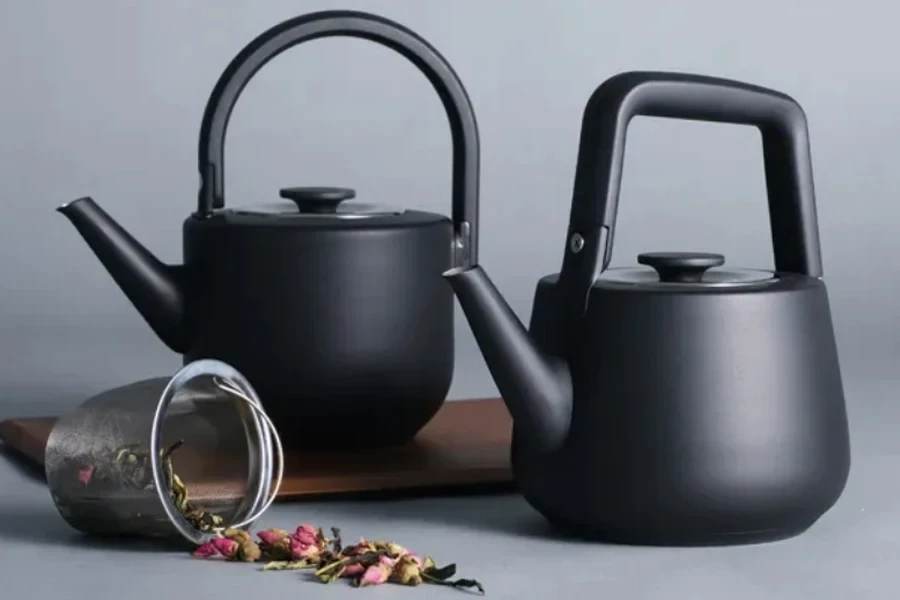
Stovetop kettles, a long-standing kitchen staple, have evolved significantly in 2024, blending traditional charm with modern functionality. Here are five notable examples that illustrate this trend:
Fellow Clyde Kettle
Description: The Fellow Clyde Kettle stands out with its unique design. It features a heat-proof silicone-coated handle, attached at one end, allowing for comfortable and controlled pouring. The kettle lacks a spout cover, simplifying use and ensuring a steady, controllable water flow. The design includes hidden reeds in the spout, creating a pleasant whistle.
Key Specs: Made of stainless steel with silicone, it has a capacity of 1.8 quarts and is suitable for gas and electric cooktops. However, it’s not compatible with induction stoves and is priced at around $105.
Distinct Features: Its ergonomic handle and unique whistle set it apart, though it’s not the fastest boiler.
Le Creuset Classic Whistling Kettle
Description: This kettle excels in boil speed, winning tests for both full and half capacity. It combines traditional design with modern efficiency, featuring a fold-down handle that aids in ease of filling and cleaning.
Key Specs: Constructed from lightweight carbon steel and porcelain enamel, it has a 1.7-quart capacity and is compatible with gas, electric, and induction cooktops.
Distinct Features: Its spout produces a steady stream for precise pouring, though the handle can get hot during prolonged boiling.
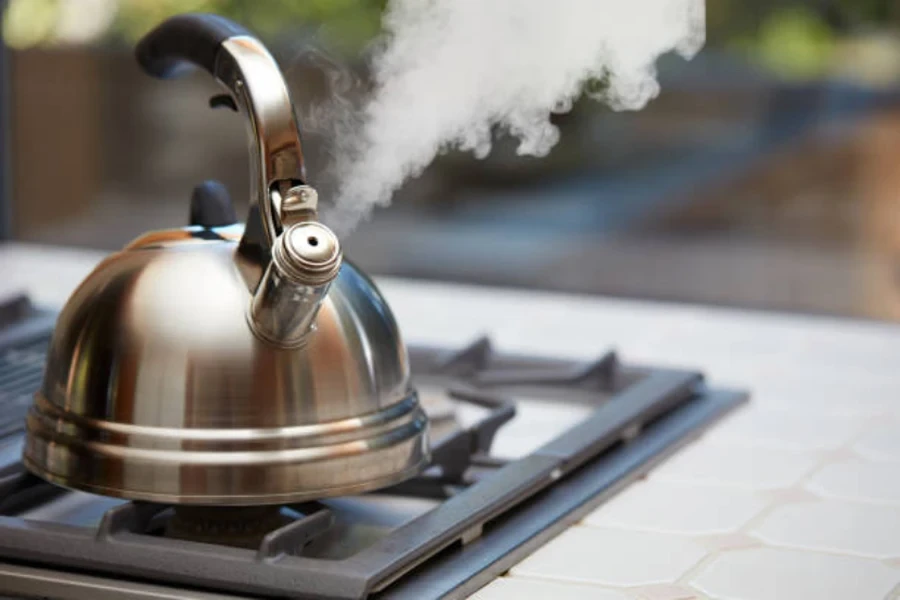
OXO Brew Classic Tea Kettle
Description: The OXO Brew Classic is notable for its speed and affordability. It features a large heat-resistant silicone grip on the handle, ensuring it remains cool to the touch.
Key Specs: With a 1.7-quart capacity, this stainless steel kettle is compatible with gas and electric stovetops and priced at around $42.
Distinct Features: The kettle offers a robust stream and precise aiming while pouring, though water can rush out if tilted too far.
Chantal Anniversary Enamel on Steel Whistling Tea Kettle
Description: This kettle is praised for its ease of pouring, thanks to an ergonomic curved handle design. It produces a full-bodied stream without splashing and is easy to clean, but the whistle trigger can get very hot.
Key Specs: The kettle features a wide opening and a round shape, facilitating easy cleaning. The handle design ensures minimal tilting is needed for pouring.
Distinct Features: It stands out for its ease of use and cleaning, though some users may find the hot whistle trigger a drawback.
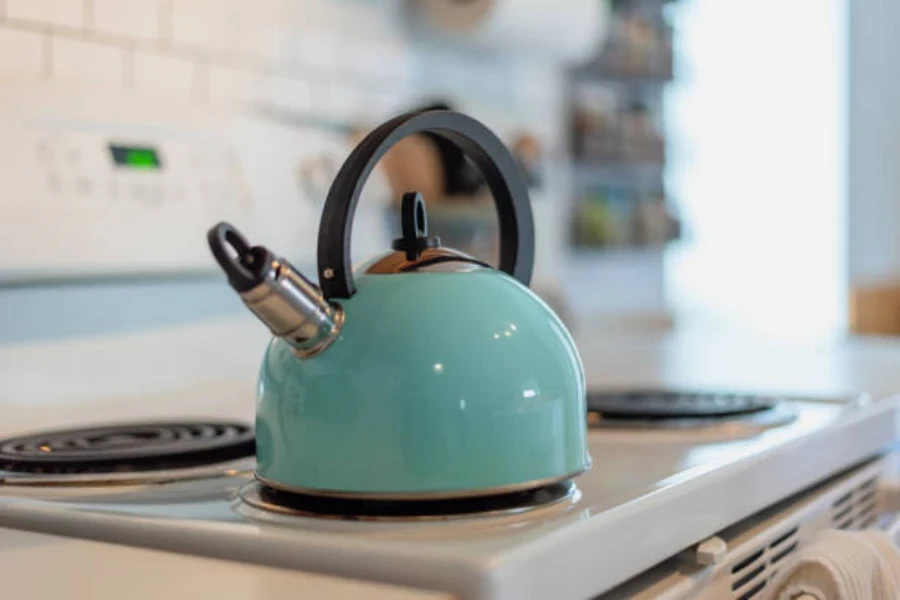
Susteas Stove Top Whistling Tea Kettle
Description: The Susteas kettle is recognized for its design, though it scored lower in boil speed tests. It features a high spout for challenging pouring and a silicone section on the handle for safety.
Key Specs: This kettle lagged in speed tests and requires caution due to the exposed metal on the handle.
Distinct Features: Its unique shape and design elements offer a distinctive look, but its functionality in boiling speed and safety might be areas of concern for some users.
These stovetop kettles represent the fusion of traditional designs with modern updates, catering to a variety of preferences and kitchen styles. From rapid boiling to ergonomic handles and unique aesthetic choices, these kettles demonstrate how traditional stovetop models have embraced innovation to meet contemporary needs.
Conclusion
In 2024, selecting the best tea kettle requires a nuanced understanding of both traditional and modern designs. The market offers an array of options, from the classic charm of stovetop kettles like the Fellow Clyde and Le Creuset, known for their rapid boil times and ergonomic designs, to innovative electric models that boast precision temperature controls, exemplified by the Breville BKE820XL and Cuisinart CPK-17. For professionals purchasing on behalf of companies, it’s crucial to consider not only the functional aspects like capacity and boil speed but also the aesthetic appeal and build quality. The ideal choice balances practicality with a design that complements the modern professional kitchen, ensuring both efficiency and style.
